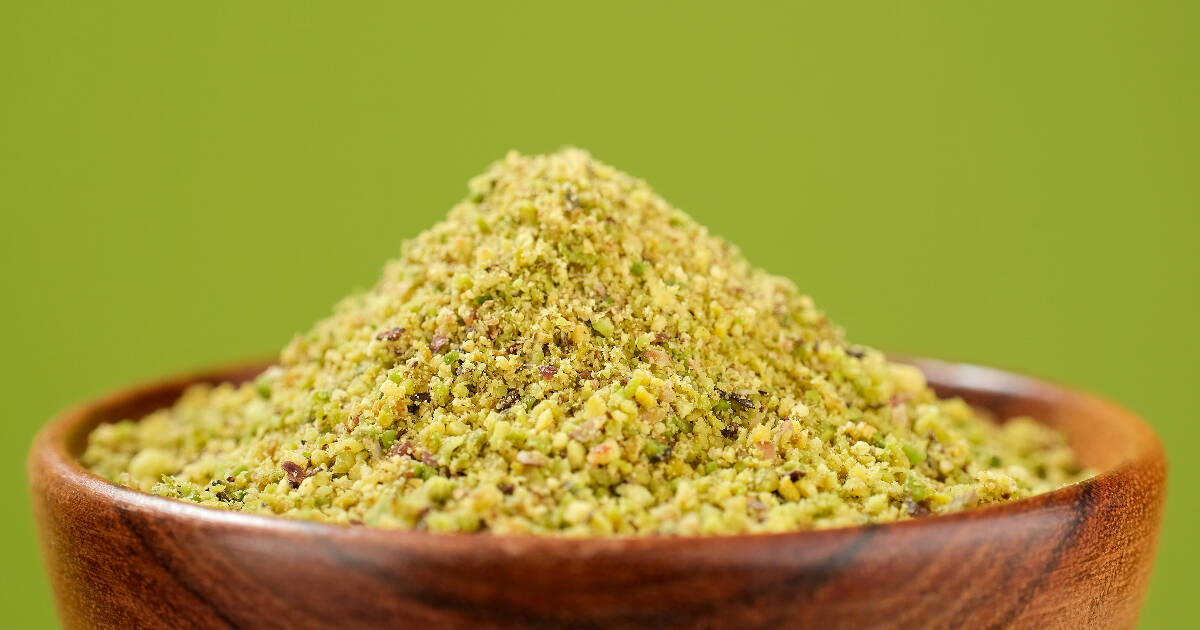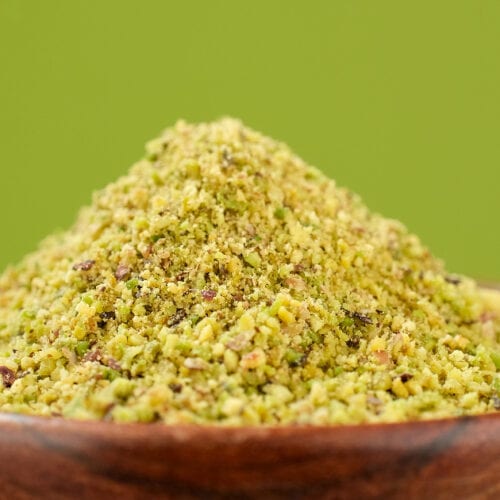Have you ever wanted to make your own nut flour at home? Pistachio flour is a versatile ingredient that can add flavor and texture to all kinds of baked goods. Making your own allows you to control the quality and taste.

Luckily, pistachio flour is simple to make with just a few basic ingredients and steps. Whether you want to save money or experiment in the kitchen, learning how to make pistachio flour is a useful skill.
Benefits of Homemade Pistachio Flour
There are many good reasons to make your own pistachio flour at home, including:
Freshness
Pistachio flour you make has maximum freshness and flavor. Pre-ground flours can lose flavor sitting on grocery store shelves.
Cost Savings
Buying pistachios in bulk and grinding them yourself is significantly cheaper per ounce than buying specialty pre-made flours.
Control Ingredients
You can use the exact type and quality of pistachios you prefer. This allows you to calibrate taste and texture.
Versatility
Homemade allows you to grind to different consistencies for different uses, from fine powder to small chunks.
Enjoyment
For many home bakers, making specialty ingredients from scratch is rewarding and fun!
Equipment Needed
You likely already have everything needed to start making pistachio flour at home:
- Pistachios
- Baking sheet
- Blender, food processor, coffee grinder, or high-powered blender
- Fine mesh strainer or sieve
- Storage containers
The only specialty piece is the grinding mechanism. A dedicated coffee grinder works great, but a powerful blender or food processor can also grind pistachios into flour.
Ingredient Info: Pistachios to Use
The type of pistachio you use as your base ingredient affects the final quality, flavor, and color of your homemade flour.
What to Buy
Go for raw, shell-on pistachios whenever possible. Raw in-shell nuts have the most flavor and freshness:
- Raw - Unroasted pistachios retain the most natural flavor, oils, and vibrancy. Many grocery stores carry them in bulk.
- In-shell - Nuts still in their protective shell maintain freshness and have less broken pieces from processing.
- Bulk bins - Buy only what you need and skip excess packaging. Check for freshness.
Other Tips
- If buying roasted or salted, use unsalted to avoid over-salting flour
- No dyes or color coatings should be present
- Bright green shells indicate freshness
High quality pistachios lead to delicious homemade flour!
Key Takeaway: Raw pistachios still in their shell work best for maximum freshness and flavor.
Step-By-Step Instructions

How to Make Pistachio Flour (Powder) - Recipe
Ingredients
- Pistachios
Instructions
Roast the Pistachios
- Roasting brings out oils and flavor compounds in the nuts. It also dries them out so they grind more easily.
- Preheat oven to 300°F
- Spread nuts in a single layer on a baking sheet
- Roast for 10-15 minutes until fragrant (no browning!)
- Cool nuts completely before next step
- Note: If using pre-roasted pistachios, skip this step.
Grind the Pistachios
- Breaking down the nuts into a fine powder is easiest with a dedicated coffee grinder. But a blender or food processor works too.
- Working in small batches, grind pistachios into a flour-like powder
- Be careful not to over process or oils will separate out
- Continue until all pistachios are ground
Sift the Pistachio Flour
- Sifting ensures an ultra-fine, uniform flour for baking uses.
- Pass ground pistachios through a fine mesh strainer or sieve
- Remove any large pieces and regrind them if necessary
- Repeat sifting until the flour is free of lumps or chunks
- And that’s it - fresh, homemade pistachio flour ready for baking and cooking!
- Be sure to store it a sealed container in the fridge or freezer to prevent oils from going rancid.
Key Takeaway: Making pistachio flour takes less than an hour with simple steps: roast, grind, sift.
Substitution Amounts
Homemade pistachio flour brings great flavor, but too much can make baked goods oily or dense. Start by substituting a smaller amount in place of traditional flour:
- In cookies, substitute up to 1/4 the flour called for with pistachio flour
- For cakes or quick breads, use up to 1/4 substitution
- Breads and yeast doughs do well with up to 15% substitution
The nutty flavor and green flecks pair especially nicely with:
Feel free to experiment with amounts in your own recipes. Keeping overall substitution under 25% is a good starting point for most baked goods.
Over time, you’ll find your perfect personalized ratios!
Key Takeaway: In baking recipes, substitute up to 1/4 of regular flour with pistachio flour for flavor and texture.
How to Store Pistachio Flour
Like other DIY flours, homemade pistachio flour requires proper storage for maximum shelf life.
Key storage guidelines include:
- Store in an airtight container at all times
- Keep in the refrigerator to retain freshness for up to one month
- For longer storage, place container in the freezer for 2-3 months
- If oils separate or flour smells bitter/rancid, it has spoiled
The refrigerator or freezer prevents the healthy fats in pistachios from oxidizing and going rancid over time.
Be sure to let refrigerated or frozen flour come fully to room temp before using in baking recipes.
FAQs
Is it easy to make pistachio flour at home?
Yes! With a good blender or food processor, making your own pistachio flour takes less than an hour. Roasting, grinding, and sifting pistachios is a pretty straightforward process. Much easier than you may think!
What recipes work well with pistachio flour?
Cookie recipes like sugar cookies, shortbread, or biscotti pair nicely with the nutty flavor. Pistachio flour also livens up cakes, muffins, scones, or pies. Get creative mixing some in!
Can pistachio flour go bad?
Yes, though homemade pistachio flour lasts 1-3 months with proper storage, the healthy oils can eventually go rancid at room temperature. If your flour ever smells bitter or “off,” has changed consistency, or separates with oil, it has spoiled and should be discarded.
Is it better to buy or make your own?
Making your own allows you to control freshness, quality, taste and save money. Unless you need just a small amount, grinding pistachios into fresh flour at home is typically the best approach.
Conclusion
Pistachio flour is such a fun and versatile ingredient to make from scratch at home. With just pistachios, baking tools, and 10 minutes of time, you can easily grind batches of fresh flour anytime a recipe calls for it.
Experiment with amounts and grind sizes to customize textures and flavors perfectly suited to your cooking. Mix it into cookies, cakes, muffins, breads, and more for a tasty twist.

